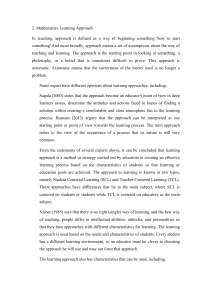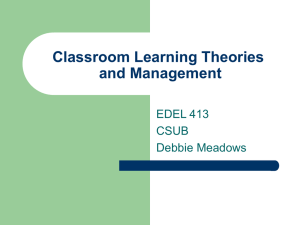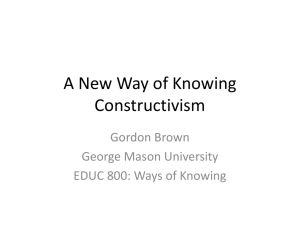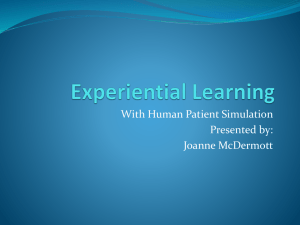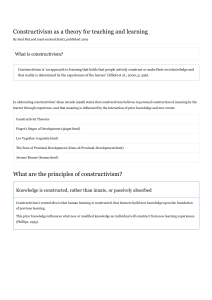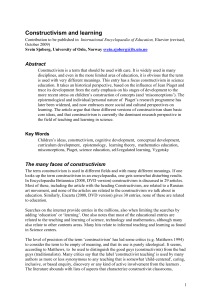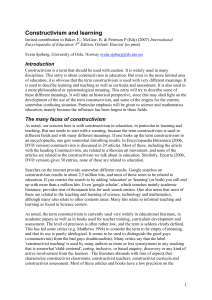Math Learning Approaches: Constructivism & SCL vs TCL
advertisement
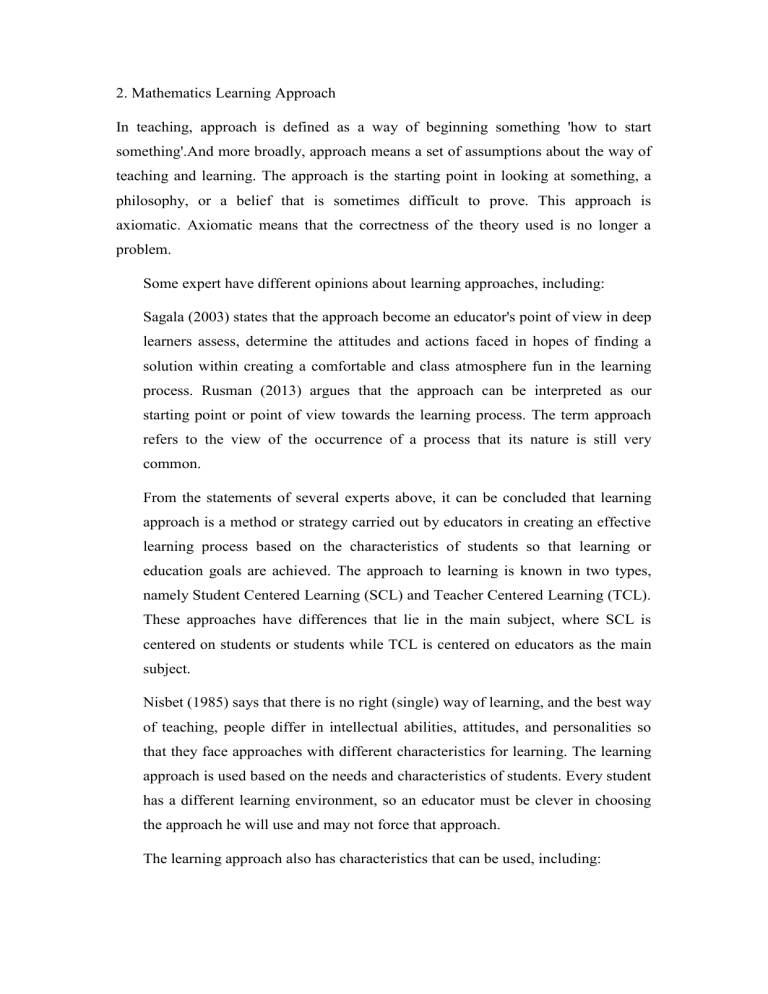
2. Mathematics Learning Approach In teaching, approach is defined as a way of beginning something 'how to start something'.And more broadly, approach means a set of assumptions about the way of teaching and learning. The approach is the starting point in looking at something, a philosophy, or a belief that is sometimes difficult to prove. This approach is axiomatic. Axiomatic means that the correctness of the theory used is no longer a problem. Some expert have different opinions about learning approaches, including: Sagala (2003) states that the approach become an educator's point of view in deep learners assess, determine the attitudes and actions faced in hopes of finding a solution within creating a comfortable and class atmosphere fun in the learning process. Rusman (2013) argues that the approach can be interpreted as our starting point or point of view towards the learning process. The term approach refers to the view of the occurrence of a process that its nature is still very common. From the statements of several experts above, it can be concluded that learning approach is a method or strategy carried out by educators in creating an effective learning process based on the characteristics of students so that learning or education goals are achieved. The approach to learning is known in two types, namely Student Centered Learning (SCL) and Teacher Centered Learning (TCL). These approaches have differences that lie in the main subject, where SCL is centered on students or students while TCL is centered on educators as the main subject. Nisbet (1985) says that there is no right (single) way of learning, and the best way of teaching, people differ in intellectual abilities, attitudes, and personalities so that they face approaches with different characteristics for learning. The learning approach is used based on the needs and characteristics of students. Every student has a different learning environment, so an educator must be clever in choosing the approach he will use and may not force that approach. The learning approach also has characteristics that can be used, including: a) Identification, setting goals, determining output qualifications and targets to be achieved must be backed by the environment. b) Choose the most effective way to achieve goals. c) Designing the teaching and learning process flow from beginning to end. d) Establish criteria and standards as benchmarks for learning achievement that has been set. These characteristics will make it easier for educators or teachers to choose the right approach to use so that learning is easily understood by students. It is common that Mathematics is considered a difficult subject to be taught and learned. Mathematics itself is a hierarchical based lesson, where the material being taught becomes a prerequisite for understanding subsequent material. However, the speed in understanding mathematical concepts and material possessed by students varies. In addition, the concept of mathematics itself has abstract and less interesting lessons. This is where the role of a teacher as an educator is expected to be able to guide students who are slow in accepting lessons. The teacher can provide varied and interesting methods of mathematics teaching so that the learning atmosphere is not monotonous so students will not feel bored. To overcome this problem, one way or strategy that can be done is to make a learning approach in mathematics. 3. Constructivism Approach Constructionvism comes from the English language "Constructivist" and comes from the word "Construct", which means to build. Constructivism is a learning process that explains how knowledge is organized in the human brain.(Rahmiati dan Didi.2018:13). In understanding constructivism itself is a process of understanding in one's learning that is developed and organized in a person's mind or brain based on what was learned or has been experienced. Constructivism emphasizes that all that is learned in the beginning will be stored and new information is received then the information will be arranged in the brain. The constructivist approach In teaching places more emphasis on top-down teaching. Namely, students begin with complex problems to be solved and continued with teacher guidance. Solve or find the basic skills needed. For example students are asked to write a new sentence structure then learn about spelling, grammar and punctuation. ( Rahmiati dan Didi.2018:17) This theory is the opposite of other theories, namely the theory of learning behavior. Where in learning with the behavior approach, students tend to only as recipients of learning. In contrast to the constructivism approach wherein this approach occurs the interaction of two parties namely the teacher and students. This theory causes many changes in the world of education, where students can actively explore their knowledge. And so the task of the teacher is not just a center of learning but as a source or direction of learning. So students can find other learning resources such as friends, reading books and so on. This theory emphasizes how students learn not how teachers teach. As a facilitator the teacher is responsible for learning activities in the classroom. Among the responsibilities of teachers in learning is to stimulate and motivate students. Diagnose and overcome student difficulties and provide experience to foster student understanding. It contrast to the traditional way the constructivism approach works in two directions starting with problems often arising from students themselves and subsequently helping students. How to solve and find steps to solve the problem. The constructivism approach is widely applied to various kinds of learning such as cooperative learning. This makes the teacher must spend more time learning for students to explore so students can discuss and experiment from the learning done. Learning cannot be simply transferred or given away. Because everyone has their own thinking scheme so that if everyone is treated the same, then everyone's thinking will be difficult to develop. With regard to piaget learning theory which states that learning is a process of assimilation and accommodation. Both processes occur in the formation of knowledge in order to form a new scheme. There are two well-known constructivist theories namely Piaget's and Vygotsky's constructivist theories. Piaget's Theory argues that cognitive development occurs gradually and with different ways of thinking. Vygotsky's Theory suggests that the learning aspect is the zone of proximal development and scaffolding. Vygotsky believes that learning social interaction has an important role. Communicating with people who have better knowledge will add to our horizons. The constructivism approach also emphasizes process or method rather than outcome. Because basically the learning process or way of learning can affect one's mindset. So according to the constructionvism approach it's not just how to learn and memorize but how we understand and construct the knowledge we can. So that our knowledge can be more imprinted and easily understood. With the knowledge construction approach we can be free or dynamic so that we can easily develop.
